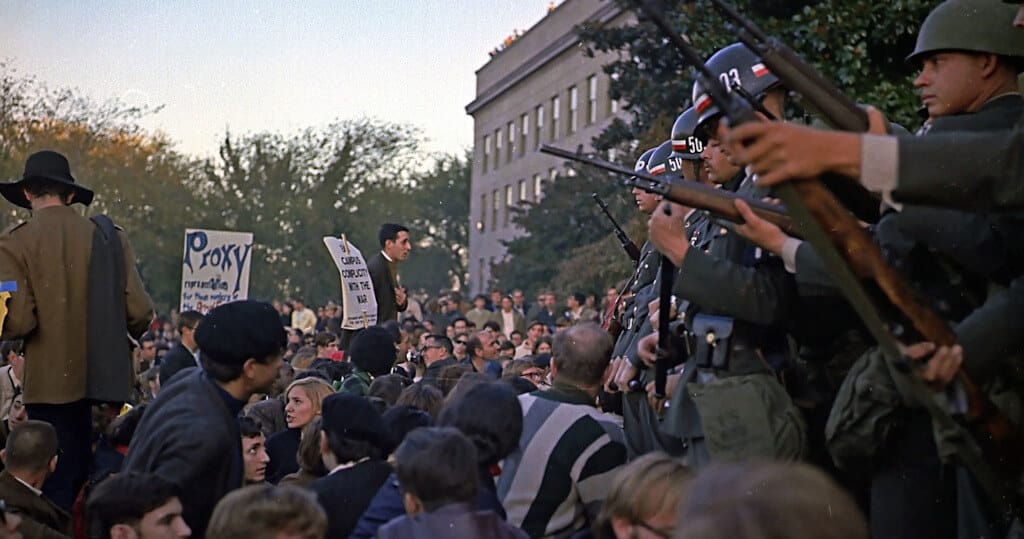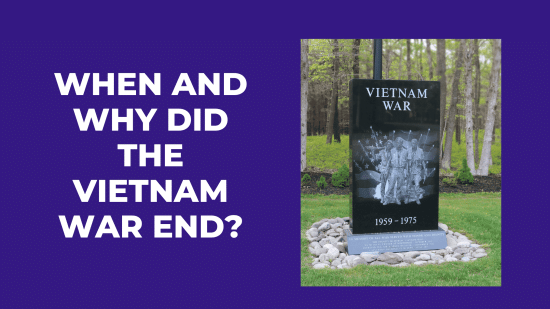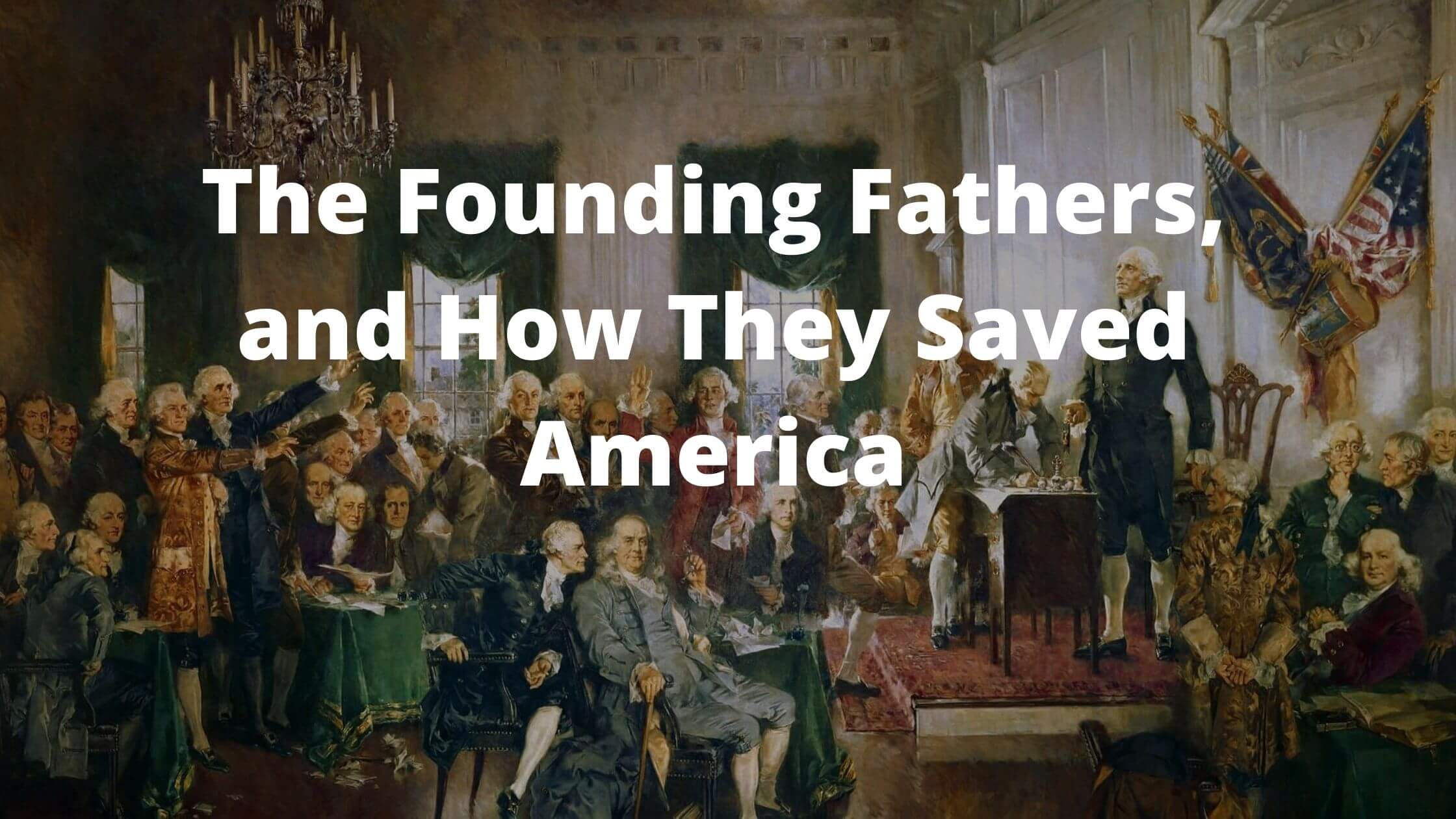It’s been almost 49 years since the end of the Vietnam War, but its legacy still looms large in American memory.
For many, it was a costly and fruitless conflict that left the United States feeling humiliated.
So, when and why did it finally come to an end?
The Vietnam War ended on April 30, 1975, when the North Vietnamese defeated the South Vietnamese and seized control.
The Vietnam War: An Overview
The Vietnam War was a long and costly conflict that pitted the communist regime of North Vietnam and its southern allies, known as the Viet Cong, against South Vietnam and its main backer, the United States.
More than 3 million people (including 58,000 Americans) were killed in the Vietnam War, which lasted more than a decade. The conflict began in earnest in 1959 with a rebellion by the Viet Cong against the government of South Vietnam.
The United States Entered the War
The United States began sending military advisors to South Vietnam in 1960. It escalated its involvement in 1964 when Congress passed the Gulf of Tonkin Resolution authorizing military action in response to an alleged attack on United States Navy ships by North Vietnamese forces.
United States troops were withdrawn from Vietnam in 1973 as part of a peace agreement between the two sides, but fighting continued.
In 1975, North Vietnamese forces captured Saigon, renamed it Ho Chi Minh City, and reunified the country under communist rule.
The United State’s Involvement in the Vietnam War
The conflict began after North Vietnam defeated the French colonial administration in 1954. The North aimed to unify the country under a communist regime modeled after the
Soviet Union and China. South Vietnam sought to keep its country closer to the West.
Throughout the 1950s, United States military advisers were present in limited numbers. Though still in the early stages of the war, the United State’s role became ever clearer as the 1960s approached.
By 1961, many American soldiers were present in South Vietnam. The United States introduced active combat units in South Vietnam in 1965.

In the first two years of the war, United States forces had taken over seven towns from the National Liberation Front, but the war remained insurgent. As more Americans were drawn into the conflict, civilian casualties rose.
In the summer of 1971, the combat mission for American troops was expected to end. However, a bomb planted by the Weather Underground outside the United States Capitol to protest the Laotian invasion brought attention to the conflict.
On the same day, the Pentagon Papers began to be published, and President Nixon announced that the United States would give $7.5 billion to Vietnam in aid. By June 1973, all United States troops had been removed.
The American public and foreign opinion began to face harsh realities in Vietnam.
President Johnson‘s weakened domestic support for his open-ended commitment to Vietnam was undermined by media coverage, making an overall victory in Vietnam unlikely.
It also signaled that the United States would not return to Southeast Asia as a permanent fixture.
Ultimately, the war in Vietnam ended with the withdrawal of American troops. If the United States wanted peace in the region, it had to be part of an agreement ending the Vietnam conflict.

Why did the Unite States Become Involved in the Vietnam War?
The United States became involved in the Vietnam War for various reasons.
- First and foremost, the United States saw Vietnam as a key part of its policy of containment, which was designed to prevent the spread of communism around the world.
- Secondly, the United States was worried about the increasing power of communist China and saw Vietnam as a way to stop its expansion.
- Finally, the United States was concerned about the stability of South Vietnam and saw it as vital to preventing communism from taking over the whole of Southeast Asia.

The United State’s Goals in the Vietnam War
The United State’s objectives in the Vietnam War were a complex set of interrelated factors. The Joint Chiefs of Staff (JCS) declared the following military objectives:
“cause North Vietnam to cease insurgency and defeat Viet Cong and North Vietnamese forces in the South, and pacify the South.”
The United States’ goals would require an offensive strategy that wouldn’t require the invasion of North Vietnam and that would respect the neutrality of neighboring Laos and Cambodia.
While this strategy was initially considered a wise strategy for the United States, its implementation was counterproductive.
The initial goal of this policy was to buy time. President Richard Nixon had campaigned to end the war. However, the United States remained committed to the war for five more years.
This approach was aimed at gradually restoring the strength of the South Vietnamese armed forces in a process which came to be known as ‘Vietnamization’. The United States military commitment in Vietnam had weakened by the war’s end, with its presence reduced to just 25,000 men.

As the United States commitment increased steadily, so did American troop levels.
In the second half of the war, the United States committed more than 11,000 soldiers and allied forces in Vietnam. The United States’ involvement in the war was legitimized by the Military Assistance Command, Vietnam’s “Many Flags” program. In addition, allied nations such as the Philippines, Thailand, and the Republic of Korea joined the conflict.
United States withdrawal
After a year-long conflict, President Nixon announced that he would cease all offensive operations against North Vietnam and withdraw all United States troops from the country. On January 27, 1973, the United States formally ended its involvement in the conflict.
The United States had lost its global standing due to its military intervention.
The intervention ended the war. But it weighed heavily on the United States’ policy and impacted international relations.
The Progress of the Vietnam War
The Vietnam War was a long, costly and divisive conflict that pitted the communist government of North Vietnam against South Vietnam and its main ally, the United States.

The war began in 1955 and ended in 1975. More than 3 million people (including 58,000 Americans) were killed in the conflict.
The war began as a struggle between communist-led North Vietnam and the United States-backed government of South Vietnam. But it soon became a larger conflict that drew in other countries.
United States involvement in the war increased throughout the 1960s, reaching a peak in 1968 when more than half a million American troops were deployed to Southeast Asia. But as the war dragged on, public opinion turned against it. The United States withdrawal from Vietnam began in 1973, and by 1975 North Vietnamese forces had seized control of South Vietnam.
The Turning Point in the Vietnam War
The turning point in the Vietnam War was the Tet Offensive, a series of coordinated attacks by the Viet Cong on more than 100 cities and towns in South Vietnam. The attacks began on January 30, 1968, and lasted about two weeks.
Although the Viet Cong were eventually driven out of all of the cities and towns that they had attacked, the offensive was seen as a major victory for them because it showed that they could still mount a significant challenge to the South Vietnamese government and its allies, despite the heavy bombing campaign that had been waged against them by the United States.

The Tet Offensive also significantly impacted public opinion in the United States, where it eroded support for the war. Until then, most Americans had believed that the United States was making progress in its efforts to defeat the Viet Cong and reunify Vietnam under a democratic government.
But after seeing news reports of the massive scale of the Viet Cong’s attacks and the high number of casualties on both sides, many Americans began to doubt whether victory was possible.
As support for the war declined, so did President Lyndon Johnson’s popularity. In March 1968, he announced that he would not seek re-election, effectively ending his political career.
In August, Democrat Hubert Humphrey won his party’s nomination to run against Republican Richard Nixon in November’s presidential election. Nixon ran on a platform of “law and order” and promised to bring an end to the Vietnam War if he was elected. He won narrowly, and in January 1969, he became America’s 37th president.
The End of the Vietnam War
The Vietnam War ended on April 30, 1975, when Saigon, the capital of the Republic of Vietnam (South Vietnam), fell to the forces of the North Vietnamese Army. The war lasted more than 20 years, with direct United States involvement lasting from 1964 to 1973. More than 58,000 Americans and an estimated 2 million Vietnamese died in the conflict.
The war began in 1955 after the surrender of French forces at the Battle of Dien Bien Phu ended French rule in Indochina.

United States support for Diem increased as communist activity in South Vietnam-backed by North Vietnam-grew. In early 1965, President Lyndon Johnson (1908-1973) authorized the use of American military forces in Southeast Asia to defend South Vietnam from communist aggression. He later said that his goals were to prevent a Communist victory and to preserve freedom in Southeast Asia.
Between 1965 and 1968, United States troop levels in South Vietnam surged from 23,000 to more than 500,000 as part of the ‘Vietnamization’ of the conflict. However, problems with corruption and poor morale within the South Vietnamese army undermined these efforts.
Meanwhile, North Vietnamese General Vo Nguyen Giap continued to build up his forces in the south through what became known as the Ho Chi Minh Trail. By early 1968, they numbered more than half a million soldiers.
The Aftermath of the Vietnam War
The Vietnam War ended on April 30, 1975, when Saigon-the capital of the Republic of Vietnam (South Vietnam) fell to the North Vietnamese army. This marked the end of American involvement in Vietnam and resulted in a Communist victory.
The United States and South Vietnamese governments sometimes exaggerated the number of enemy deaths.
But this was not the end of the war. The fighting was far from over, and the DRV and Viet Cong forces refused to surrender.
As a result, North and South Vietnam built up their air defenses with aid from the Soviet Union and China. This led to heavy civilian casualties. The country remained at war for many years, but it eventually started to change course and begin a liberal economy.

The United States received a lukewarm reception when its troops returned from the war. A vocal section of the population expressed anger at the federal government, racism, and the war on returning veterans.
In reality, most Americans viewed the war as a “good war,” while the Vietnam conflict was a disaster. Unfortunately, many Vietnam veterans did not receive adequate domestic support.
However, with increased awareness and the help of many veterans, the public started to welcome home its veterans.
The destruction of villages separated families and destroyed the family structure that was central to Vietnamese culture.
An immense psychological toll
When the United States began removing its troops from Vietnam, it left over 800,000 orphaned children. In addition, many of these families stayed in the cities, where they feared renewed offensive. The displaced population contributed to the instability of a fragile society.
The Vietnam War resulted in the deaths of 2 million Vietnamese civilians, 1.1 million North Vietnamese soldiers, and 58,000 United States troops.

Get Smarter on US News, History, and the Constitution
Join the thousands of fellow patriots who rely on our 5-minute newsletter to stay informed on the key events and trends that shaped our nation's past and continue to shape its present.
The destruction caused by the bombing of the war was huge. In addition, the war devastated the countryside, with thousands of craters littering the hillsides and rice paddies. Eventually, the war ended, but the damage was far from done.
After the war, a significant number of Vietnam Veterans suffer from psychological problems and life-adjustment problems.
Twenty-six percent of men and nearly one in ten women developed full-blown Post-traumatic stress disorder (PTSD). However, only a few Vietnam Veterans sought treatment for this disorder. And in some cases, there was no definitive cause for PTSD, and the symptoms did not appear until decades later. This means there are no definitive answers to how Vietnam Veterans cope with PTSD.




